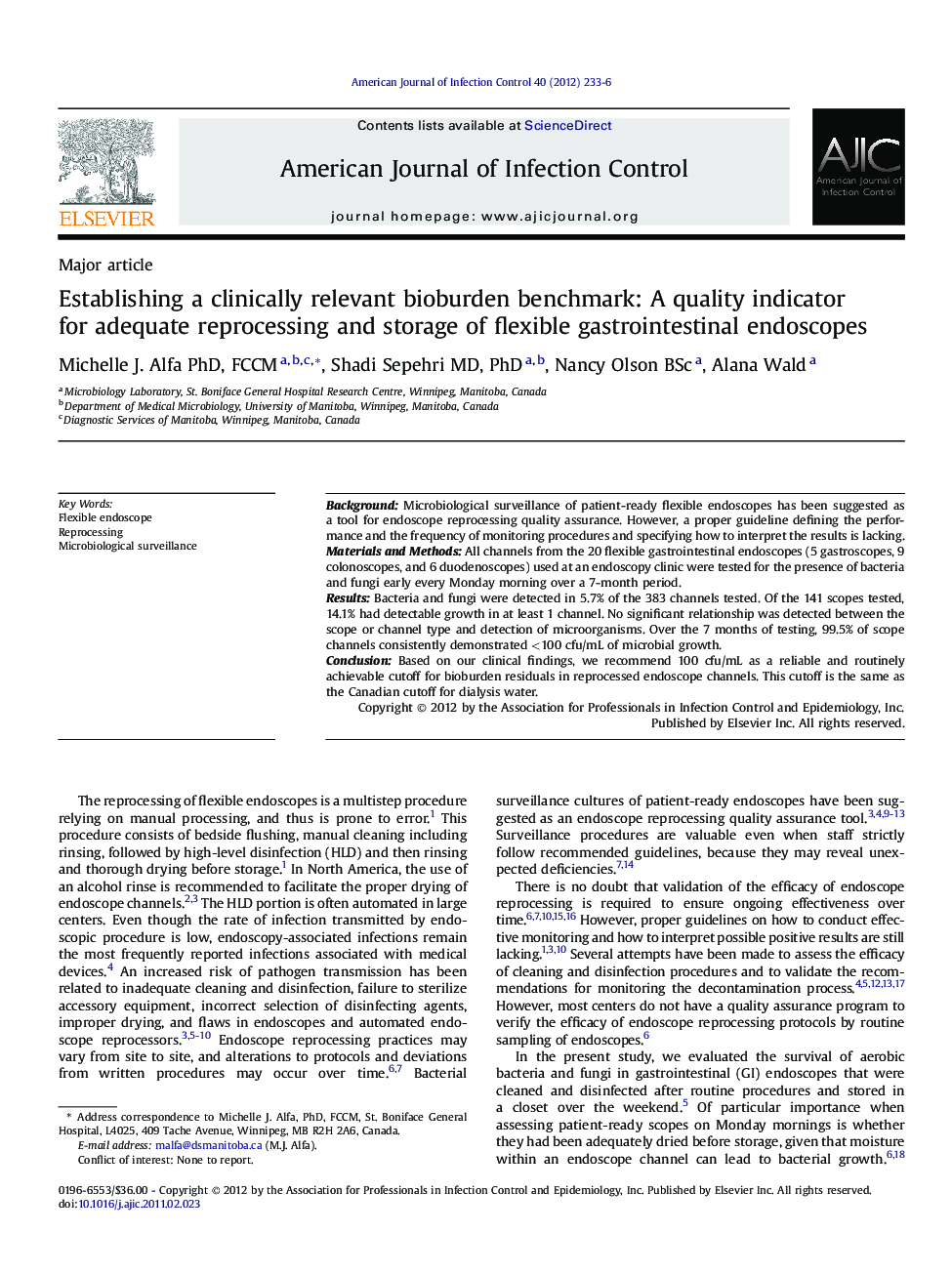| Article ID | Journal | Published Year | Pages | File Type |
|---|---|---|---|---|
| 2638028 | American Journal of Infection Control | 2012 | 4 Pages |
BackgroundMicrobiological surveillance of patient-ready flexible endoscopes has been suggested as a tool for endoscope reprocessing quality assurance. However, a proper guideline defining the performance and the frequency of monitoring procedures and specifying how to interpret the results is lacking.Materials and MethodsAll channels from the 20 flexible gastrointestinal endoscopes (5 gastroscopes, 9 colonoscopes, and 6 duodenoscopes) used at an endoscopy clinic were tested for the presence of bacteria and fungi early every Monday morning over a 7-month period.ResultsBacteria and fungi were detected in 5.7% of the 383 channels tested. Of the 141 scopes tested, 14.1% had detectable growth in at least 1 channel. No significant relationship was detected between the scope or channel type and detection of microorganisms. Over the 7 months of testing, 99.5% of scope channels consistently demonstrated <100 cfu/mL of microbial growth.ConclusionBased on our clinical findings, we recommend 100 cfu/mL as a reliable and routinely achievable cutoff for bioburden residuals in reprocessed endoscope channels. This cutoff is the same as the Canadian cutoff for dialysis water.
